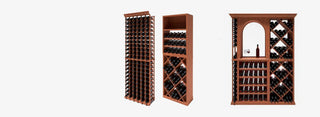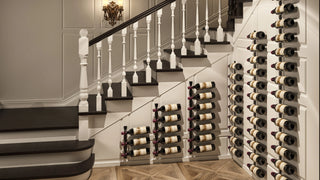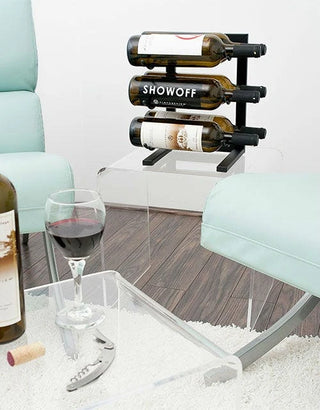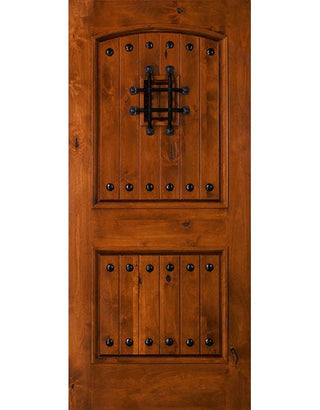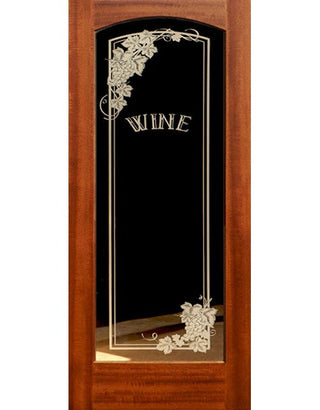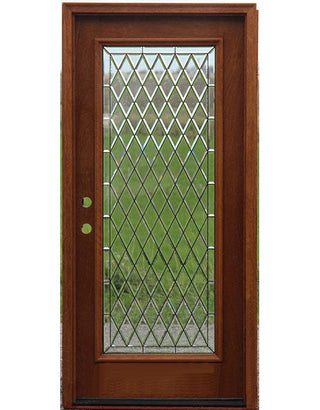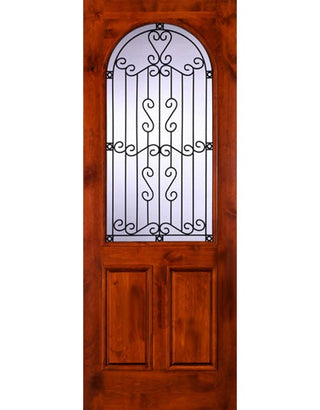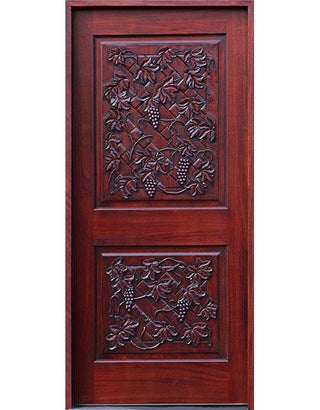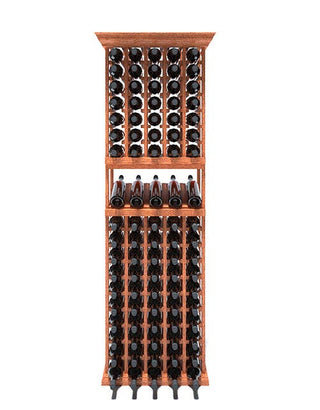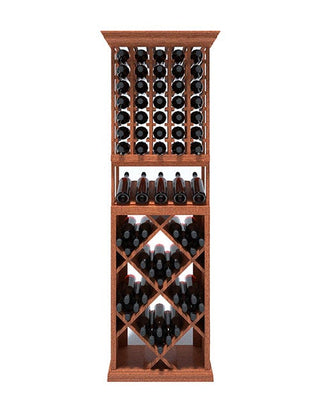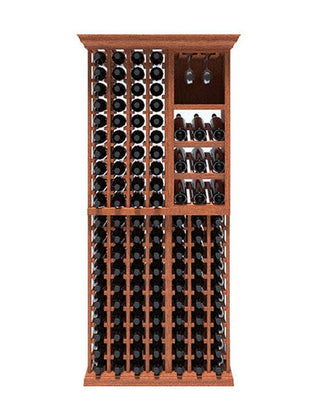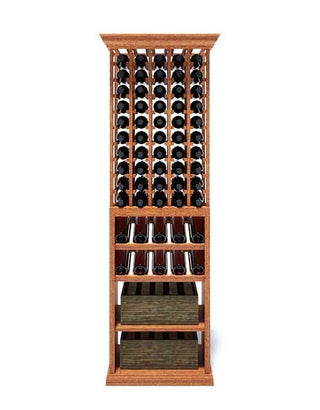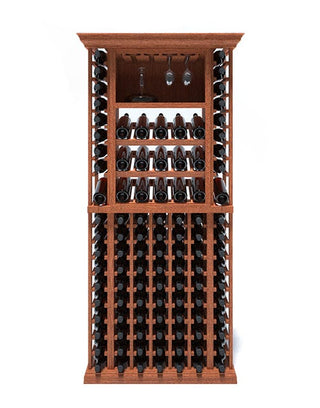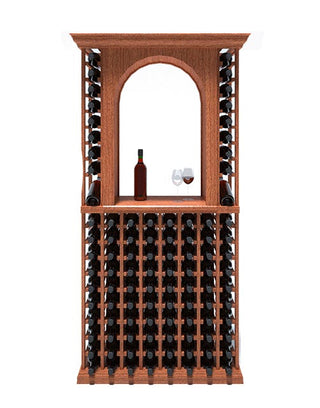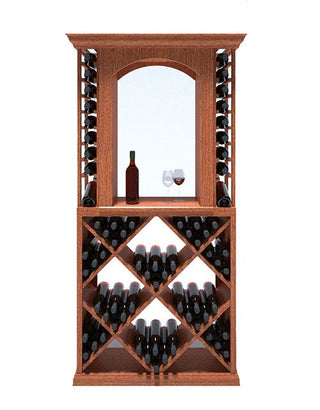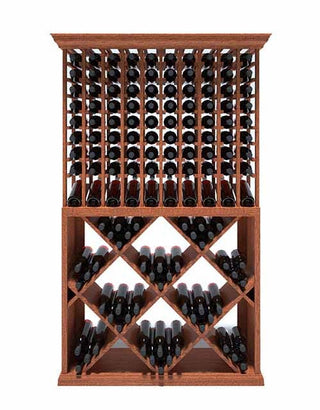
How to Build A Wine Cellar

First Choose the Type
There are basically two types of wine cellars
- Passive Wine Cellar:
No environmental temperature / humidity control - Active Wine Cellar:
Environmental control of temperature / humidity

Ideal Wine Cellar Conditions and Requirements
Whether you have a Passive or Active Wine Cellar, we recommend an average temperature of 55 degrees Fahrenheit for all wine storage. Cooler temperatures won't damage your wine but will slow it's development. Keep in mind a temperature of 65 degrees or more will have a negative effect on wine the longer it's stored.
The ideal humidity in your wine cellar should be between 60 and 70 percent, but anything over 50 percent is acceptable. High humidity, 80 percent or more, may cause mold to form on the corks and bottles.
The ideal long-term wine storage should avoid heat, direct light and vibration. Ideally, your space can accommodate thse conditions year-round. If not, consider investing in a wine cooling unit and humdification system.

Location! Location! A Basement Wine Cellar or Wine Room?
Before you know how to build a wine cellar you have to choose where you will install one. Location is the most important factor to consider when building a wine cellar on a budget. Picking the right location can save you thousands of dollars in renovation costs, wine cellar cooling units, and more. Wine should be stored in a location without direct sunline and a place where the temperature doesn't fluctuate. This is why many people decide on building a wine cellar in basements, closets and under the stairs.

Home Wine Cellar Ideas
You'll have many decisions to make when building a wine cellar, but deciding on the wine cellar location is the best place to start. Your wine storage doesn't have to be a custom-built wine cellar anymore. Transform an offbeat niche or alcove, under the stairs, or a spare closet, you name it!

Basement Wine Cellar

Dedicated Wine Room

Wine Pantry

Under Stairs Wine Cellar

Wine Closet

Kitchen Cabinet Wine Storage

Wine Cellar Construction
Whether you're a homeowner building a wine cellar for yourself or a contractor working on this type of job for the first time, these pointers can help you create a wine preservation masterpiece.
The first step to ensuring your project is a success is to check for air, light and water leaks that could damage your collection. Fix leaks and fill holes to ensure you have a suitable safe space to build your wine cellar.
If your basement already has a concrete floor you're in luck - this is a great material for building a wine cellar floor, as it is far less pourous than many other commonly used flooring materials. Ceramic tile and stone also make great choices. For a touch of artistic flair, consider mosaic tiles. Your next step is to seal any concrete walls and your floor with a "paint on" sealant (such as "DryLock").
Electrical work should be completed to code prior to insulation and drywall. Take a look at the current outlets and think about what you will need in your new space. Envision the layout in detail. Electrical work is important and can be dangerous, so trust an experienced professional with this task.

Consider furring your walls and prioritize insulation - more detail on proper wine insulation is shared below. Choose your preferred wine cellar framing. Unless local codes dictate otherwise, standard 2 x 4 framing is sufficient for R13 insulation; ideally R19 should be used for insulation, thus requiring 2 x 6 framing.
Any electrical work should be completed to code prior to adding insulation and drywall.
Optimal Wine Cellar Framing & Insulation
- 2" x 6" Framing
- R19 Insulation in Walls
- R30 Insulation in Ceiling
Our team is here to provide additional guidance. Reach out to our custom wine cellar team for advice tailored to your project.

Insulation is Necessary when Building a Wine Cellar
A vapor barrier is critical in controlling the humidity of your wine cellar. This barrier keeps the higher humidity from flowing out of the room, and prevents warm and most air from getting in (especialy in high temperature and humid areas). The vapor barrier helps to prevent excess condensation build up if you are using a cooling unit.
The interior walls of your wine cellar should be insulated with a minimum of R13 for 2 x 4 framing (preferably R19 in 2 x 6). If you live in areas of very high summer temperatures or very low winter temperatures, we recommend that you insulate with R19 (minimum) and R30 where your framing allows. Ceilings should be insulated to a minimum of R19 with R30 being preferred.

If you have access to both sides of your stud wall
Install the vapor barrier between the studs and the warm exterior wall.
- Exterior Wall
- 6 mil poly/plastic Vapor Barrier
- Insulation
- Drywall or Greenboard (recommended)
- Wall Treatment
Typically, 1/2″ plywood sheeting will be secured to all walls (after electrical rough in and insulation) to anchor your wine racking, but it is not required if using nailers between studs. Although a standard 1/2″– 3/4″ sheet rock may be used, it is highly recommended that you use moisture resistant “green board”.

If you have access only to the interior of your stud wall
Install the vapor barrier stapled over the studs prior to installing insulation.
- 6 mil poly/plastic Vapor Barrier
- Insulation
- Drywall or Greenboard (recommended)
- Wall Treatment
Your wallboard may be finished with a quality oil base or latex enamel paint. We do not recommend installing a baseboard as the racking will be flush to the entire wall and include a toe kick molding.

Choose A Wall Treatment
A wall treatment can really help set the mood in your basement wine cellar or wine room. Some popular ideas include paneling made from wooden wine crates to wine corks and classic brick. Consider lining the wall with our Natural Stone Veneer Panels; the perfect backdrop to showcase your bottles. We carry ledgestone, mosaic stone, river rock stone and many more in a variety of shapes and colors. From on-trend Alaska Gray real stone veneer panels to archaic Boston Blend real stone thin veneer styles, we have a look for everyone. Made of real stone in the USA, this high-quality finish adds authenticity and prestige to your wine cellar design.





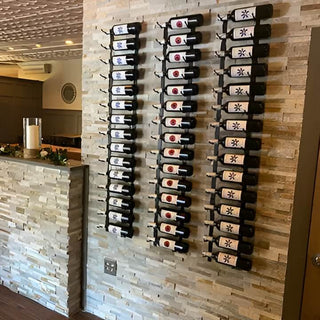

Wine Racking Options
Choosing the right wine racks is an essential finishing touch, and our specialty. Traditional wooden wine racks, stunning metal wine racks and innovative complete cellar systems can bring endless design possibilities to your new space.
- Wooden wine racks: Our Prestige Wine Rack Kits are handmade locally and are some of our most popular wooden solutions. Prestige designs come in a wide range of heights, styles, wood species and finishes. For those that admire the finest craftsmanship and seek a timeless product that will last a lifetime, Prestige wooden wine racks are for you.
- Metal wine racks: For an iconic, statement look consider VintageView metal wine racks. With label-forward designs, floating wine racks and floor-to-ceiling wine kits, this collection can transform your cellar into a modern masterpiece.

Selecting a Door
Enter your new space through a beautiful and functional wine cellar door. When building a wine cellar it is essential that an exterior grade door is chosen, to keep the cool in and heat out and best preserve your collection. Your chosen door should therefore have excellent insulating properties. Our gorgeous pre-hung solid wooden wine cellar doors make the most of glass panels and intricate carvings to create the regal entrance you deserve.

Wine Cellar Cooling Essential When Building a Wine Cellar
Wine cooling units are available in several different configurations. Take some time to choose the Best Wine Cellar Cooling Unit For You based on your cellar location and size. Wine cooling units work similar to air conditioners – they add cool air to the room and exhaust hot air. Most cooling units can be installed if you’re handy, with the exception of the split systems. Split systems require an experienced HVAC Contractor for installation because coolant must be added to the system once installed. For proper operation and effectiveness of your cooling unit, it is important to get the right size unit for your space, have proper insulation and vapor barriers.

Through-the-Wall Cooling Unit- installed through a hole in a wall and exhausted into another room (or exterior space depending on the unit)

Fully Ducted Cooling Unit- allows you to mount the cooling unit remotely (in a ceiling or utility room) and uses ducting to both blow the cool air in and exhaust the warm air out.

Split System Cooling- works like your home central air conditioning. Half of the unit is located inside the cellar and the other half is located outside of your home. Theuse units usually require installation by a certified HVAC technician.

Building a Wine Cellar on a Budget
Are you building a wine cellar on a budget? The cost of building a wine cellar can seem daunting at first, but here at WineRacks.com we believe wine storage comes in all shapes and sizes. How much it costs to build a wine cellar depends heavily on several key factors, but building a wine cellar on a budget is entirely possible. Here are some key factors to keep in mind when building a wine cellar on a budget.
How to Build a Wine Cellar on a Budget
An inexpensive route for wine storage would be to convert your existing kitchen cabinets into convenient wine drawers. For as little as $350 you can purchase wine drawers that store up to 12 bottles (or for a little over $500, store 24 bottles). These wine racks ship fully assembled and are designed to work with your already existing kitchen cabinets. Visit our Kitchen Wine Storage page for more ideas on storing wine in kitchens and dining rooms. Another great option would be to purchase Wall Series Wine Racks by VintageView.
Home Wine Storage Ideas for Small Spaces
Now that you have a better idea on how to build a wine cellar on a budget, we are able to give you more ideas for small spaces! No room for a dedicated wine room? No problem. Transform an offbeat niche or alcove, under the stairs, or a spare closet, you name it. We can design wood or metal storage for shallow areas, stark corners or narrow openings, and more. Check out our Vintage View slim storage solutions in metal – perfect floor to ceiling options where wood frames won’t fit.






Need Help with a Design Plan for Building a Wine Cellar?
Our team is here to ensure your wine cellar build is a success. Our free design consultation services help you create a beautiful space that enhances your lifestyle, and prioritizes your passion.
Contact our design team today to build your dream wine cellar.

